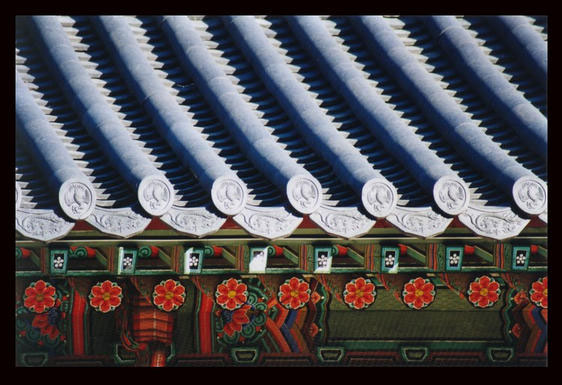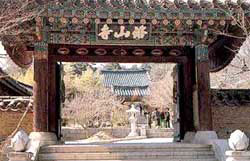
A taste of Buddhist life in South Korea
By Brigid Grauman, Bloomberg News, March 15, 2009
Seoul, South Korea — It may look easy, though it’s not. Buddhist prostration involves folding giraffe-like down onto your knees and – after a face-down inclination – coming up again. Next to me, a monk was going at it hell-for-leather.
After struggling for a while, I found that if I gave a small impetus with my palms I got up less stumblingly. That was the best I could do at 4 a.m.
South Korea may well be the land of TV soaps and reality shows, but it is also where Seon Buddhism, Korea’s answer to Japan’s Zen, has remained the purest, or so the Koreans say.
I was sampling it at the Hwagyesa temple at the foot of the pine-tree covered Mount Samgaksan, where Koreans go hiking on weekends. Also called the Seoul International Zen Center, this is one of several temples where tourists can get a taste of Korean Buddhism for a day or more — and take a restoring break from the tumult of the economic meltdown.
Buddhist retreats are an increasingly popular destination for those seeking spiritual quietude or enlightenment. The Spartan “temple stay” program for foreign visitors was introduced in 2002 during the World Cup soccer games and takes in some 43 temples throughout the country.
 At the Hwagyesa temple early in the morning, some Koreans drop by on their way to work, parking large, expensive-looking cars in front of the entrance. This is a temple of the Jogye sect, the country’s most powerful of 27 orders, with 3,000 temples and some 250,000 monks. I was housed (sharing my windowless room with a friend) in a building that contains the halls for meditation and chanting.
At the Hwagyesa temple early in the morning, some Koreans drop by on their way to work, parking large, expensive-looking cars in front of the entrance. This is a temple of the Jogye sect, the country’s most powerful of 27 orders, with 3,000 temples and some 250,000 monks. I was housed (sharing my windowless room with a friend) in a building that contains the halls for meditation and chanting.
A Buddhist day starts with the awakening of all sentient beings in hell, on earth, in the sky and the water by the sounding of a bell, drums, a gong and a stick rattled in a wooden fish.
Our packed schedule had been printed out on a sheet, so we knew what was in store: wake up at 3 a.m. after a fitful few hours of sleep on a mattress on the floor, followed 20 minutes later by meditation, then at 4:10 a.m. by 108 bows (not compulsory) and chanting by monks at 4:30 a.m. in a wooden hall lit by the soft twilight. After that, 40 more minutes of meditation and breakfast at 6 a.m. Meditation, as the charmingly cryptic monk allocated to us explained, involves — seated in the lotus position — emptying one’s mind by focusing on a riddle he told us about a person getting 30 blows whether he was inside or outside a circle. Needless to say, you need commitment. My thoughts shamefully featured breakfast trays of fresh toast and marmalade.
When they’re not eating Dunkin’ Donuts, the South Koreans are diet conscious, with a predilection for fresh vegetables and herbs. The monks’ regime is free of additives, onion and garlic and thus bland. We ate rice, soup and the ubiquitous pickled-vegetable kimchi, and our monk explained why he rinsed his bowl clean and drank the dregs.
“Many people worked hard to get me this food, and I must honor them,” he said.
In the Buddhist tradition, I proceeded to sweep the yard in semicircular swings of my broom, thus symbolically wiping away greed, anger and ignorance. Finally, we went for a brisk walk up the mountain, past electric-sounding crickets, until — hot and sweaty — we reached a peak with a wonderful view of Seoul surrounded by greenery. That was a special moment. By the time of the tea ritual, I was wishing I could stay another night.
If You Go – Temple stays
For more information on visits to South Korean temples, see www.templestay.com. (click on “global site” to get the English-language version). A stay of one night and two days costs about $26 to $45, including room and board. You generally share a room. Some temples offer training in martial arts, lotus-lantern making and prayer-bead making. The larger temples run corporate trainee programs.
Source buddhistchannel.tv




